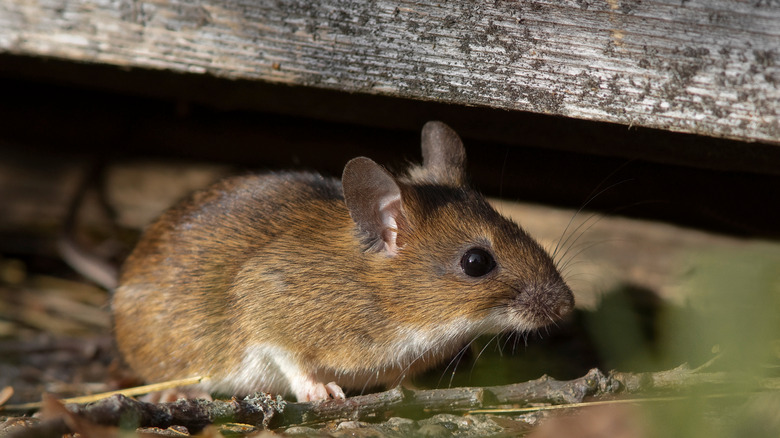Wild Field Mouse Diet
Field mice are common little mammals. With brown fur, long tails, and small rounded ears, the various species of mice can appear quite similar. The field mouse typically measures about 5 or 6 inches long and weighs less than an ounce. The best way to tell the difference between a field mouse and a house mouse is the field mouse's white underbelly. House mice have solid brown or gray coats.
What is a field mouse?
The term "field mouse" can apply to a few different species of mice. However, the species most commonly referred to as "field mouse" is the deer mouse of North America, though people also refer to the wood mouse of Europe as a "field mouse." The North American field mouse (Peromyscus maniculatus) ranges from Alaska all the way to central Mexico.
What do field mice eat?
The North American field mouse has a similar diet to that of other species of mice. It is omnivorous, which means that it eats both plant and animal matter. Field mice commonly prey on arthropods, and caterpillars are one of their favorite meals. Their primary plant food source is seeds, though they also eat nuts, flowers, fruits, and fungi.
Subspecies in different regions have somewhat different feeding habits. For example, the Colorado populations of field mice feed primarily on pinyon seeds, whereas Idaho populations rely heavily on wheatgrass seeds for survival. The composition of their diet is similar, but the exact seeds harvested vary based on the location and subspecies.
Field mouse foraging behavior
Seeds and plants typically become quite scarce during the cold winter months. For this reason, field mice begin creating food caches, or stores, when the temperature begins to drop in the fall. They stash food underground or in hollow logs and use the cache when they cannot find food throughout the winter. They usually create their nest in close proximity to their food cache.
Field mice in the food web
A wide variety of other animals rely on field mice as a source of food. Because the mice are nocturnal, they generally avoid daytime predators such as hawks. Their primary predators include owls, foxes, mink, bobcats, weasels, ringtails, coyotes, and snakes. They also frequently fall prey to domestic cats. Unfortunately, poison-based pest control methods can result in sickness or death for the predators who feed on poisoned mice.
These little mammals also benefit the food web by helping trees and shrubs disperse their seeds. In addition to plants, field mice also help disperse the spores of various fungi.
Field mouse reproduction
As a food source, you don't find much better than a mouse! Field mice, like nearly all mice, reproduce prolifically. Females can breed at around two months old, and the gestation period lasts less than a month. They give birth to five young on average, and the babies become independent at about a month old. Females can breed again shortly after giving birth, which means a female can produce several litters in a single season.
Field mice subspecies
Across their range, different populations have enough genetic differences for researchers to recognize them as separate subspecies of field mice. Though the species as a whole has incredibly prolific numbers, some subspecies don't necessarily have the same success. For example, the Wisconsin Department of Natural Resources places the prairie deer mouse (Peromyscus maniculatus bairdii) on their State Special Concern list.
Another unique example of differing subspecies is the island deer mouse. This subspecies of field mouse lives on the Channel Islands off the coast of California. However, each island has its own unique and genetically distinct subspecies of field mouse. Just like their counterparts on the mainland, this subspecies prefers feeding on caterpillars and seeds.
